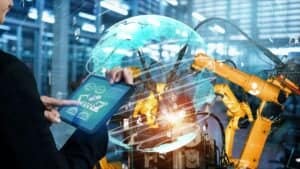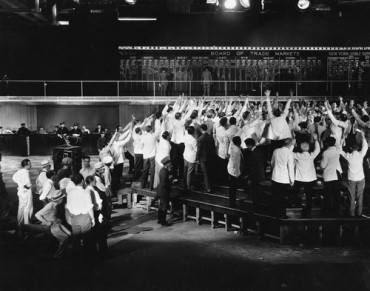
The maturation of predictive and real-time intelligence in manufacturing is a natural progression along the path to a data-centric approach to operations.
The United States’ journey to reinvent manufacturing is well-underway with continued momentum into 2024. On the heels of the CHIPs Act, the future of reshoring, nearshoring, and resilience for US manufacturing looks bright. Not to mention other recent manufacturing incentives. Underpinning this is that manufacturing-related construction — and spending on the construction of new factories — is surging.
Gartner research shows that 80% of CEOs are increasing digital technology investments to counter current economic pressures. And, according to McKinsey, it’s not uncommon for digitally powered manufacturing solutions to reduce downtime, increase thruput, improve productivity, and more accurately forecast. With continued investment in manufacturing, advanced technologies like automation, machine learning, and analytics are better positioned to deliver efficiency for the industry.
When we look back, 2024 will be a pivotal moment in time for US manufacturing as the industry gets closer to realizing its digitally powered future.
Autonomous strategies take shape as new plants are built
For years, talk of autonomous factories has stolen the spotlight. From the early iterations of Industry 4.0 decades ago, to the promise of edge and IoT solutions in the 2010s, and now, more recently, the impact of AI and ML. In fact, at IPC APEX EXPO 2024, which brings together manufacturing industry members and peers to collaborate on the future, the theme is what’s next becomes now.
Now is correct. According to the Association of Manufacturing Technology (AMT) US Manufacturing Technology Orders Report, 2023 manufacturing orders totaled over $4.9 billion and trended up in December. In fact, the last month of 2023 saw orders totaling nearly $500 million, up over 20% from November 2023 and nearly 12% above December 2022. And, as it pertains to smart manufacturing — and the adoption of Industry 4.0 solutions like digital twins and automated technology — spending will exceed $950 billion in 2030. Since implementing these manufacturing technologies takes time and many companies have already started, it is critical that those that have not do not overthink this initiative. If so, there is a risk of being left behind.
See also: How AI is Proving as a Game Changer in Manufacturing – Use Cases and Examples
Real-time intelligence shifts demand
A modern manufacturing industry sets the foundation for a workforce shift, a skills evolution, and a reimagined future. According to Deloitte, the future of manufacturing places a higher reliance on human capital, an expansion of digital and “soft” skills, and an understanding of how to leverage digital tools. This push is generated by manufacturing’s need to shorten the time between data capture and value delivery – and, in many instances, focuses on predictive insights rather than reaction. For example, new manufacturing solutions are able to feed information from sensors on the line back to a central command center that provide valuable information about performance and machinery health. In this scenario, managers can identify any dips in performance and prevent very costly issues from happening.
In a similar vein, interest has also turned to AI. As stated in MIT, getting ready for manufacturing’s intelligent future starts with high-value data, organizational and operational shifts, and focusing on ROI. So, it is not just technology for technology’s sake. The maturation of real-time and predictive intelligence in manufacturing is a natural progression towards AI applications, in which data-centric algorithms will augment workers.
Talent pipelines will be nurtured at the college level
The US manufacturing talent pipeline is playing catch up in today’s environment. Luckily, that’s being rectified, but in the near term, it has resulted in a gap. As much as manufacturing has a pipeline deficit to overcome, it has a perception just as critical to reimagine.
Part of this conversation starts at the education level. Why? Because the future of manufacturing isn’t what it was depicted as thirty years ago. It is digitally connected and automated – and it requires both an understanding of emerging technology and trust in its deployment. And, if we are to realize this potential, the workforce must feel nurtured, valued, and invested in, as opposed to being seen as replaceable. This must change if we are to have a sustained manufacturing resurgence.
The good news is we are seeing progress. Colleges and universities are playing their part in raising awareness of a new manufacturing industry and building curriculums that develop the required skills to undertake these jobs. As is mentorship. Whether it’s working alongside automated machines or understanding the new analytical skills required to supplement automated workflows, programs are training a new generation of smart factory talent.
It is an exciting time for US manufacturing. Construction is underway, education is being reimagined, perceptions are shifting, digital solutions are garnering investment, and – ultimately – production will take place closer to home.
This isn’t a flick-of-the-switch situation – but optimism is in the air with the potential to transform our future.






























